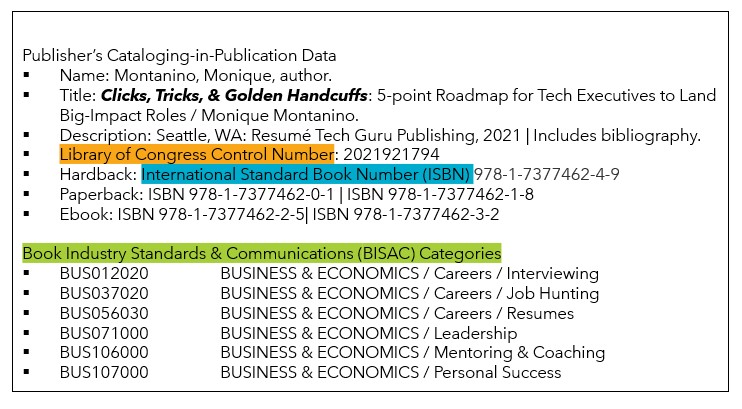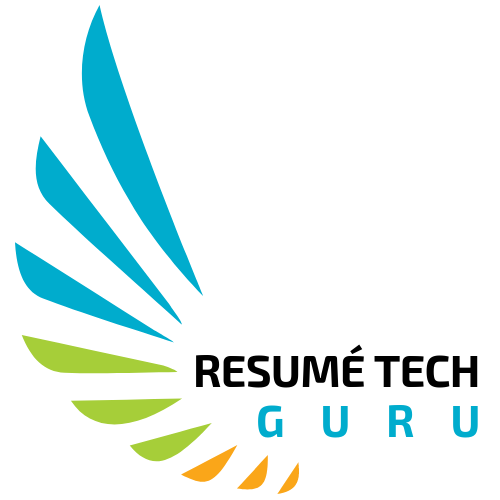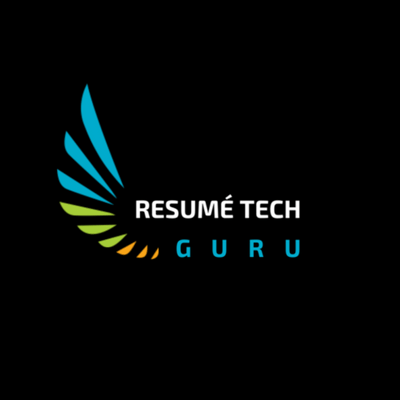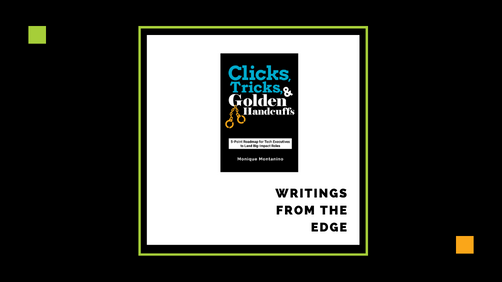It’s been a year since I wrote and self-published my book Clicks, Tricks, & Golden Handcuffs: 5-Point Roadmap for Tech Executives to Land Big-Impact Roles. It’s written for aspiring or current technologists explaining how to become an online click magnet for executive recruiters, plus the tricks for a successful job search strategy. Golden handcuffs refer to the compensational seduction corporations use to retain their top talent.
Back in February, I presented to my 7-member writing cohort confessions of what writing my book entailed. Here’s a wrap-up of what I wish I had known before embarking on this publishing endeavor. And I shed light on whether it was worth the effort and money to produce a 20-chapter book now available at Amazon, Apple Books, Barnes & Noble, and Walmart.
Today I’m focusing on the innies— the inside components and my inner drive—of book production.
My Back Story
Five years ago, I became intellectually bored after an early retirement from a Fortune 200 tech company. There’s only so much SUP (stand-up paddle board) on Lake Union in Seattle that one can do to fill the days.
I pivoted, went back to school, and became a certified career coach for tech executives. To build professional credibility, I developed a monthly cadence of publishing 2 articles on LinkedIn, providing insight for those pursuing their next career move. Each piece contained an average of 2,000 words filled with career industry research, client experience, and my zigzagging marketing and sales executive career.
A couple of years passed. During breakfast one morning, my husband said, “You should write a book.” To which I countered, “Who me? I know nothing about writing a book.” After sleeping on it, I decided to go for it!
In trying to figure out the writing mechanics, into my email inbox sashayed Dr. Cindy Childress. With a Ph.D. in English and being a ghostwriter, she knew a thing or two about writing. She offered an 8-week course focused primarily on the interior book content to have students create a table of contents and a rough draft within that time.
Inner Drive
It’s one thing to say you’re going to write a book; it’s another to follow through. I signed up for Dr. Cindy’s writing cohort in January 2021. I had a healthy head start since I had published over 70 articles, which I repurposed for the book. Along with her cheerleading, expertise, classes, and guest speakers, I completed a book outline with an initial 52,000-word draft by August.
I discovered that my classmates had different motivations for writing books. Some are coaches and one is a screenwriter with a compelling memoir that I’m confident will be a hit on Netflix.
At times fellow students developed writer’s block, writing frustration, or experienced personal issues that stalled their book efforts. To keep us on track, Dr. Cindy offered an online Excel spreadsheet where we routinely entered our weekly word-count progress. This tool was an excellent incentive for me to keep writing for a minimum of 2 hours a day, 5 days a week, without fail.
For some reason, I had the crazy idea that my book would be reasonably close to completion at the end of the 8-week class. Not so.
It Takes a Village
There’s much more to writing a book than the words themselves.
I could have pressed the easy button and hired a book publisher. I didn’t because, as I mentioned previously, intellectual challenges bring me joy. If you need to improve your project management or research skills, consider hiring a hybrid publisher or forklifting the book to a full-service publishing provider. They will take care of your book’s innards and external components. Of course, the cost associated with that support starts at around $7,500 for hybrid publishing.
Since I was self-publishing for the first time, my learning curve was quite steep. There are many excellent sources of information.
I tapped on the expertise of my fellow coaching colleague Kate Dixon who had written a negotiation book and was working on her second consulting book. One of my former colleagues from Nortel Networks, Mark Baggesen, had written several books and was a stellar editor. I read blogs and books and googled my way to the finish line. I hired my book editor and layout designer, Emily, graphic artist Stephanie Corbin, and photographer Sasha Reiko. My village was pulled together.
Interior Layout Design
As part of my writing group confession earlier this year, I shared the importance of hiring a layout designer right after you complete your table of contents. Why? Because layout designers can convey the possible limitations of book publishing software. My layout designer used Vellum software, which offered only 9 fonts and 8 formatting styles at the time. I didn’t realize until the month before I published my book that the fonts I selected—Bookman Old Style serif font for text and Century Gothic sans serif font for headlines—weren’t available in Vellum.
And I recommend asking for sample formats upfront. I didn’t.
Another thing to know is what file formats the publishing software can handle. There are different file requirements for hardcover, paperback, and ePublications such as Kindle, Nook, Kobo, and Google Play. It paid to have a layout designer like mine who understands the ins and outs of file formats. I’m pleased with the final product.
Copyright Protection & Library of Congress #
Copyright exists automatically in an original work of authorship once it is fixed in a tangible medium. Governing laws are different from country to country. In the U.S. the copyright lasts for the author’s life plus an additional 70 years. You can apply for a $45 fee to the U.S. Copyright Office, which is part of the U.S. Library of Congress. You’ll include your copyright number as part of the publisher’s cataloging-in-publication data appearing inside your book after the title page and before the table of contents.
While hanging out online with the government, you can apply for a pre-publication U.S. Library of Congress (LOC) number. Libraries use this number to locate a specific LOC catalog record in the national databases and to order catalog cards from the LOC or commercial suppliers.
It builds your professional street credibility. At least, that’s what I told myself.
The great news is that the LOC number is free of charge, and if your book qualifies, it takes 1-2 weeks to receive. Unfortunately, you can’t apply for one if you’re only producing an eBook. Another thing is if you’re self-publishing, your odds of acceptance are low.
There are 8 qualifications for applying for the LOC number:
- Paperback or hardcover with ISBN (International Standard Book Number)
- Approximate number of pages
- Text language
- Month & year published
- Your date of birth
- Name all your contributors
- Date
- Fill out the title page, publisher name, city of publications
In my 8-week class, I learned the importance of determining where your book appears on the shelf of brick-and-mortar stores, online stores, and the public library. I was delighted to find out that my eBook is available at the Boston Public Library. There’s a science to book placement, which is tied to BISAC (Book Industry Standards and Communications) categories. For Amazon placement, I researched #1 best-selling book categories and keywords.
The Book Industry Study Group is a U.S. trade association for book policy, technical standards, and research, and they publish an annual BISAC list. These subject headings are the 9-character alphanumeric book category codes indicating the genre, topic, and theme to book buyers, retailers, and distributors. Book distributors such as Ingram Spark, Baker & Taylor, and Barnes & Noble expect them to be a part of your book’s metadata. Even if you’re only planning to upload your book to Amazon’s Kindle Direct Publishing (KDP), you’ll need to provide BISAC codes.
On the KDP platform, you can select 2 book categories from the dashboard when you upload your files. To determine my types, I researched bestselling authors in my genre and landed on “Business & Money” and “Business Management.” On Amazon, I researched existing book titles related to my target audience to select the keywords for uploading my files. The results appear below with the top picks for technology, careers, and leadership.
| 7 keywords or short phrases | Search results |
| technology | 400,000 |
| careers | 100,00 |
| leadership | 70,000 |
| personal development | 70,000 |
| leadership books | 60,000 |
| coaching | 60,000 |
| job search | 30,000 |
Do you know those bar codes appearing on the back of a book? They are called International Standard Book Numbers, or ISBN for short. There’s only 1 legitimate agency that sells them, although, in an online search, you might find others illegally selling them at a discount. You should only purchase from ISBN international agencies; otherwise, the publisher name becomes that of who originally purchased the ISBN. Single bar codes are available for $125.
If you have different formats of your book, as I did with hard cover, paperback, and eBook with varying price points, you need multiple ISBNs and unique ones for different distributors. If you plan to create new book titles in the future, select a package of 10 ISBNs for $295.
As you can see below, I had 6 different ISBNs for my book imprint Resumé Tech Guru Publishing. If you only plan to publish on Amazon, they use an ASIN (Amazon Standard Identification Number). It’s free, but they become your de facto publisher. I wanted self-publishing rights, so I used my ISBNs on Amazon.
| ISBN-13 | Media/Format | Price | Distributor |
| 978-1-7377462-0-1 | Paperback | $19.95 | IngramSpark |
| 978-1-7377462-1-8 | Paperback | $19.95 | Amazon |
| 978-1-7377462-2-5 | eBook | $9.95 | Amazon |
| 978-1-7377462-3-2 | eBook | $9.95 | Draft2Digital |
| 978-1-7377462-4-9 | Hardback | $29.95 | Amazon |
| 978-1-7377462-5-6 | eBook | $9.95 | IngramSpark |
Tying this all together, below is my book’s metadata with LOC, ISBNs, and BISAC categories.

Manuscript Editing
I boldly stated during the completion of my 8-week writing course that my book publication on Amazon would occur in the Fall. It was time to buckle down.
I arranged my book’s contents to follow a 5-part career roadmap targeting 2,300 words per chapter. I selected a 5.25″ x 8” trim size for the paperback version. Factoring in 80 footnotes and the accompanying bibliography, I ended up with a 305-page book.
To reach my goal, I spent the next 3 months logging in 4-hour daily editing sessions before handing it off to my book editor Emily Fuggetta out of Portland, Oregon. After her 2-week review, I edited again for 1 month before having her complete the final edit. Alas, I obsessively found more required tweaks, so another week passed.
Finally, with 52,316 words finessed, my book was self-published on Thanksgiving Day. I selected this day to coincide with most people’s downtime during the holidays to read.
It’s best to reverse engineer from your deadline how much time it takes to complete the innies. I could have taken more than 2 years to write this since Hachette India wasn’t paying me a book advance like most certainly they did for former CEO of PepsiCo Indra Nooyi’s My Life is Full. If only.
Next time I’ll confess about outies. I’m an immense fan of creative design.



